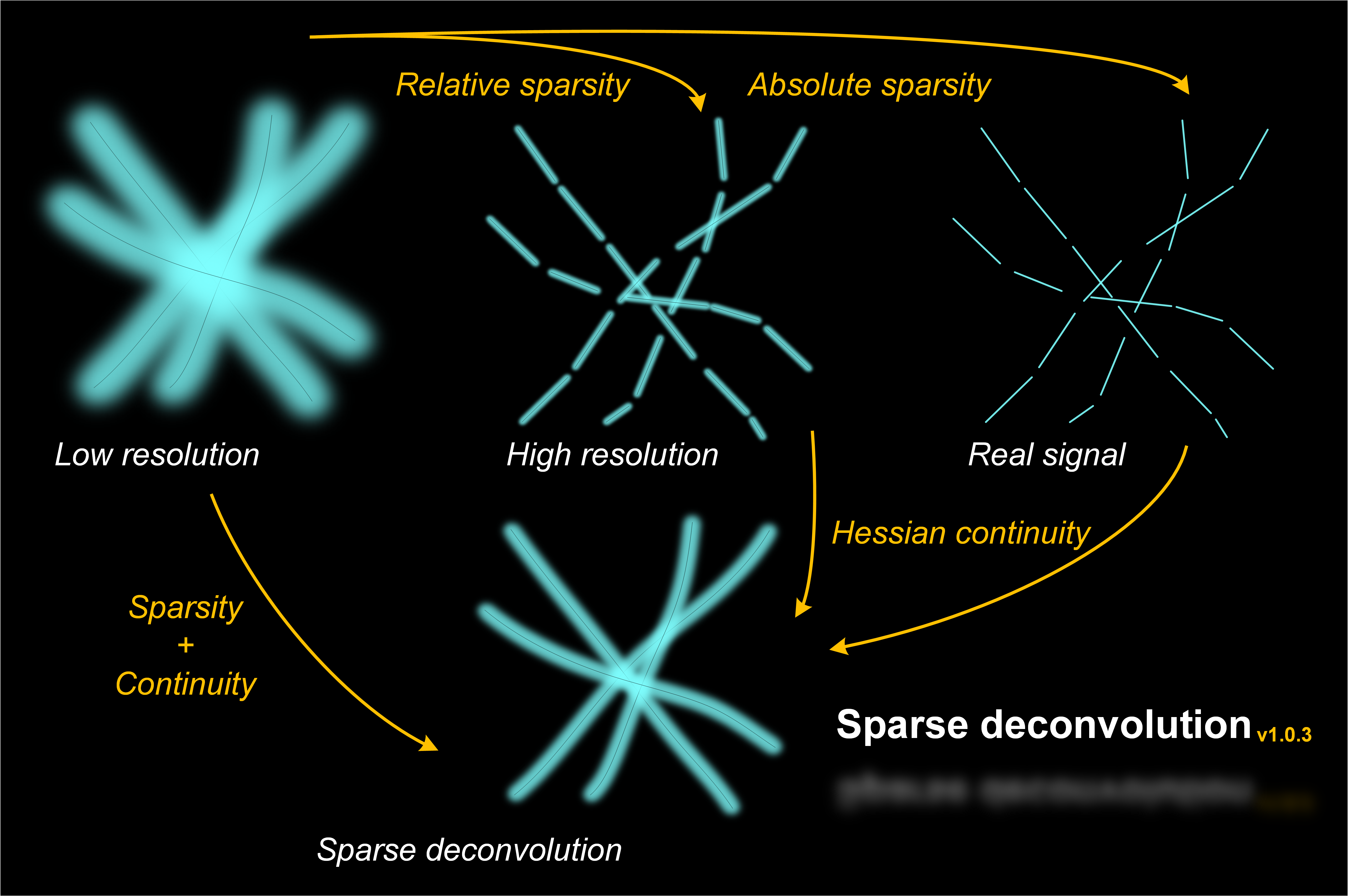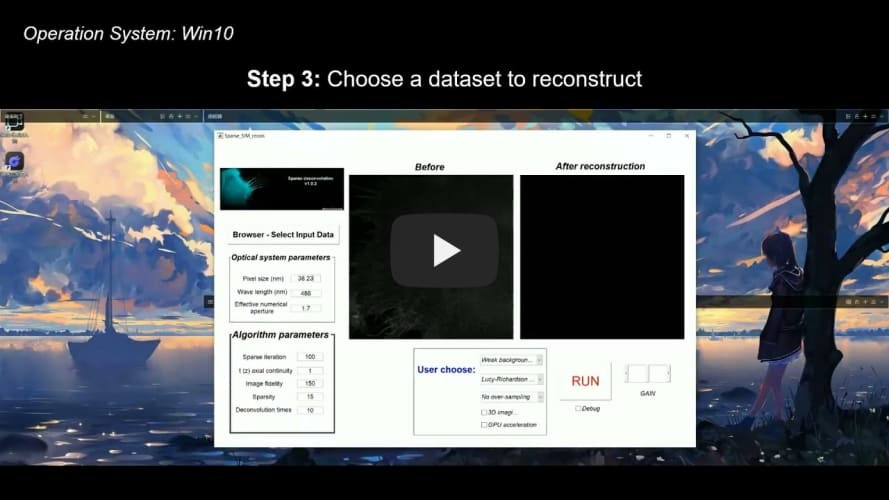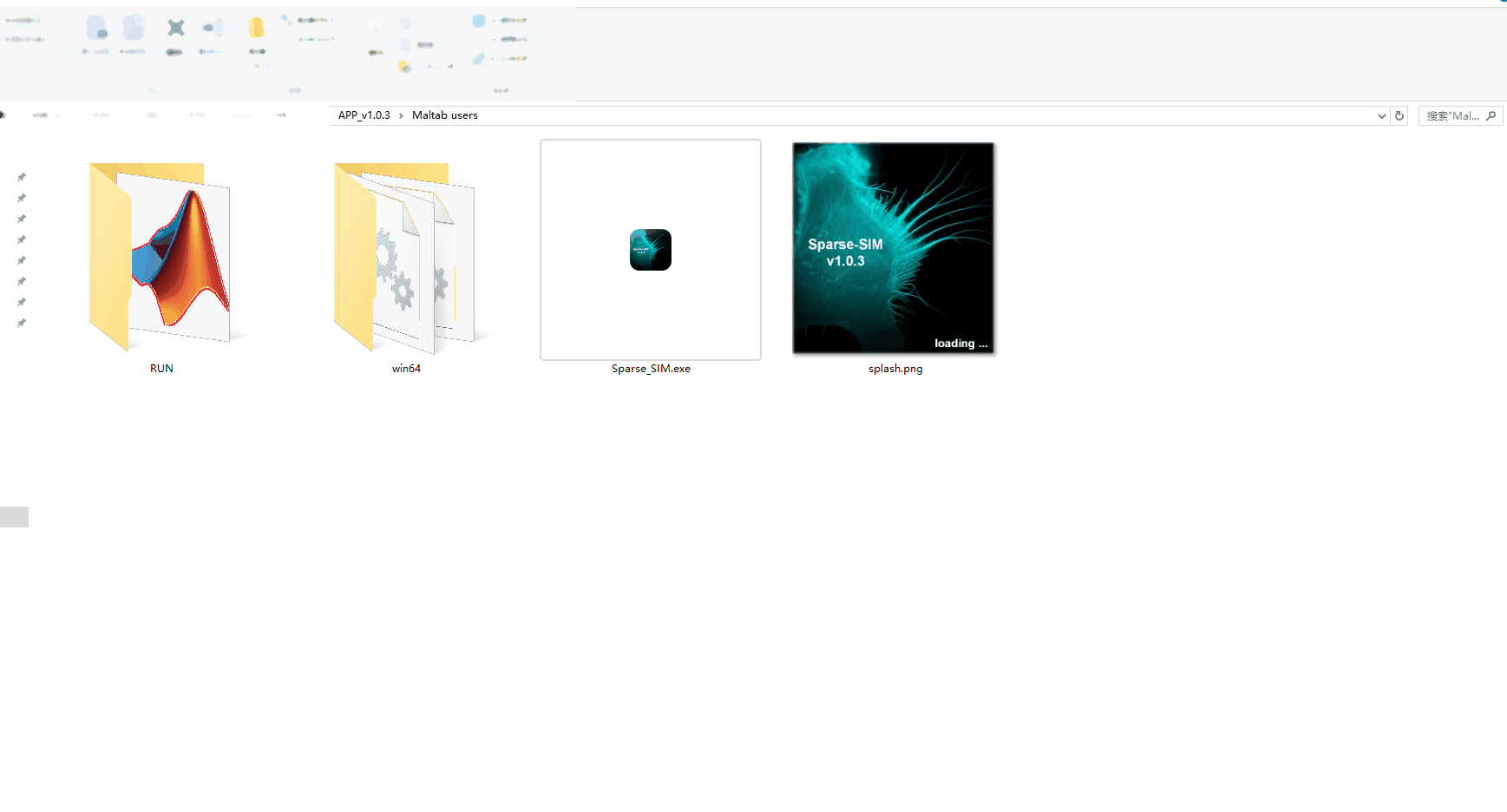Sparse deconvolution App

Official MATLAB implementation of the "Sparse deconvolution" -v1.0.3
Sparse deconvolutionv1.0.3
Words written in the front: Physical resolution might be meaningless if in the mathmetical space.
It is a part of publication. For details, please refer to: Weisong Zhao et al. Sparse deconvolution improves the resolution of live-cell super-resolution fluorescence microscopy, Nature Biotechnology 40, 606–617 (2022).<hr>
The related Python version can be found at HERE
You can also find some fancy results and comparisons on my website.
If you are interested in our work, I wrote a #behind_the_paper post for further reading.
Here is also a blog about it for further reading.
This method has been tested on various types of Confocal microscopy & STED microscopy, Wide-field & TIRF microscopy, Light-sheet microscopy, Multi-photon microscopy, and Structured illumination microscopy, feasible for single-slice, time-lapse, and volumetric datasets.
Introduction
This repository contains the updating version of Sparse deconvolution. The Sparse deconvolution is an universal post-processing framework for fluorescence (or intensity-based) image restoration, including xy (2D), xy-t (2D along t axis), and xy-z (3D) images. It is based on the natural priori knowledge of forward fluorescence imaging model: sparsity and continuity along xy-t (z) axes.

Instruction
- The binary executable files (.exe/.app) can be found in the release
- More details on Wiki and Document.
- /src_unix is the source code for Unix-like systems (including MacOS).
- /src_win is the source code for Windows systems.
- Clone/download, and run the
Install.m - The input
Effective NAshould be given according to the sum ofillumination NAanddetection NA. For instances: wide-field is theobjective NA(e.g., 1.49); SIM is theillumination NA + objective NA(e.g., 1.3 + 1.7); SD-SIM is~1.8 * objective NA. - Please try help
xxxto get the API.help SparseHessian_core help background_estimation help Fourier_Oversample
Installation of binary executable file (.exe) for Win10 system.
[ ](https://www.youtube.com/watch?v=99CoWvTtQwg “”)
](https://www.youtube.com/watch?v=99CoWvTtQwg “”)
Or directly click the .\for Maltab users\Sparse_SIM.exe if you are using MATLAB 2017b.

Algorithm UI

Parameters: Wiki and Document
Tested platform
This software has been tested on:
- MATLAB R2017b on (Win 10: 128 GB and NVIDIA Titan Xp: 12GB; CUDA 9.1);
- MATLAB R2019b on (Win 10: 128 GB and NVIDIA Titan RTX: 24GB; CUDA 10.0);
- MATLAB R2019b on (Win 10: 16GB and NVIDIA GTX1050Ti: 4GB, CUDA 10.2);
- MATLAB R2015b on (CentOS 7: 64GB and Tesla K40 :12GB, CUDA 9.0);
- MATLAB R2018b on (Ubuntu 18.04: 16GB and NVIDIA TITAN Xp: 12GB, CUDA 10.1);
- MATLAB R2017b on (MacOS 10: 8GB without GPU acceleration).
More on Wiki.
Version
- v1.0.3 Fully open source!
- v1.0.3 Another type deconvolution, and up-sampling methods, first officially released version!
- v0.6.3 Reorder the background estimation
- v0.6.2 Debug mode
- v0.6.1 Progress bar feature and logo
- v0.5.1 Up-sampling feature and change input file type from
.matto.tif - v0.4.1 Background estimation feature
- v0.3.0 Algorithm UI
- v0.2.0 Full model reconstruction
- v0.1.0 Sparsity reconstruction core
Related links:
- Python version of Sparse deconvolution: sparse-deconv-py
- A light weight MATLAB library for making exsiting images to videos: img2vid
- An adaptive filter to remove isolate hot pixels: Adaptive filter imagej-plugin
- A tool for multi-color 2D or 3D imaging: Merge channels
- Further reading: #behind_the_paper & blog
- Some fancy results and comparisons: my website
- Preprint: Weisong Zhao et al., Extending resolution of structured illumination microscopy with sparse deconvolution, Research Square (2021).
- Reference: Weisong Zhao et al. Sparse deconvolution improves the resolution of live-cell super-resolution fluorescence microscopy, Nature Biotechnology 40, 606–617 (2022).
Plans
Open source Sparse deconvolution
- This software and corresponding methods can only be used for non-commercial use, and they are under Open Data Commons Open Database License v1.0.
- Feedback, questions, bug reports and patches are welcome and encouraged!











